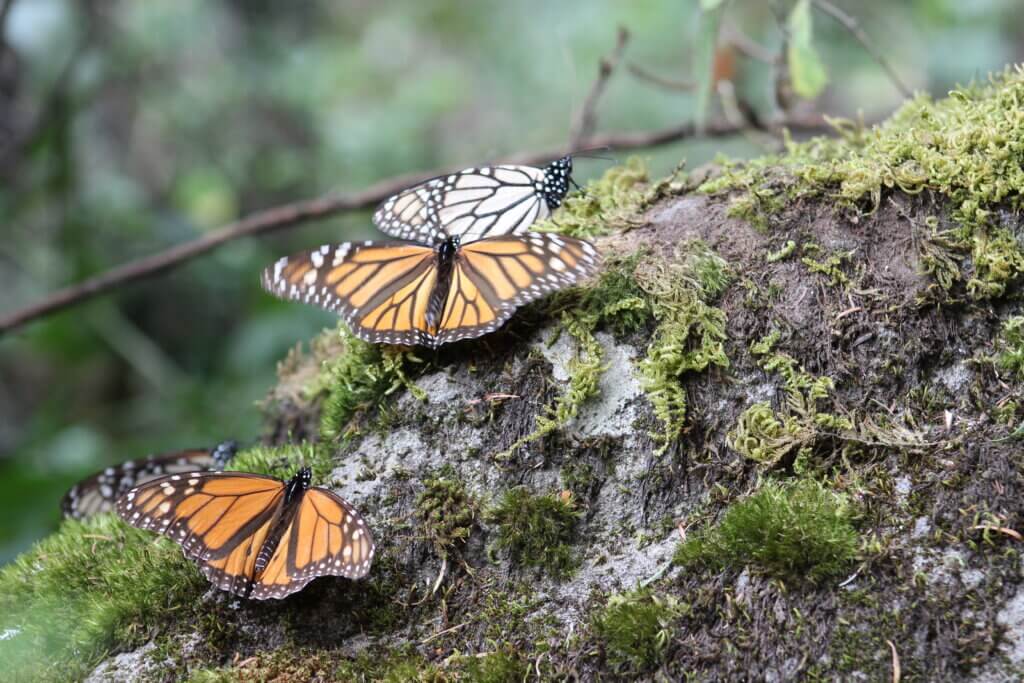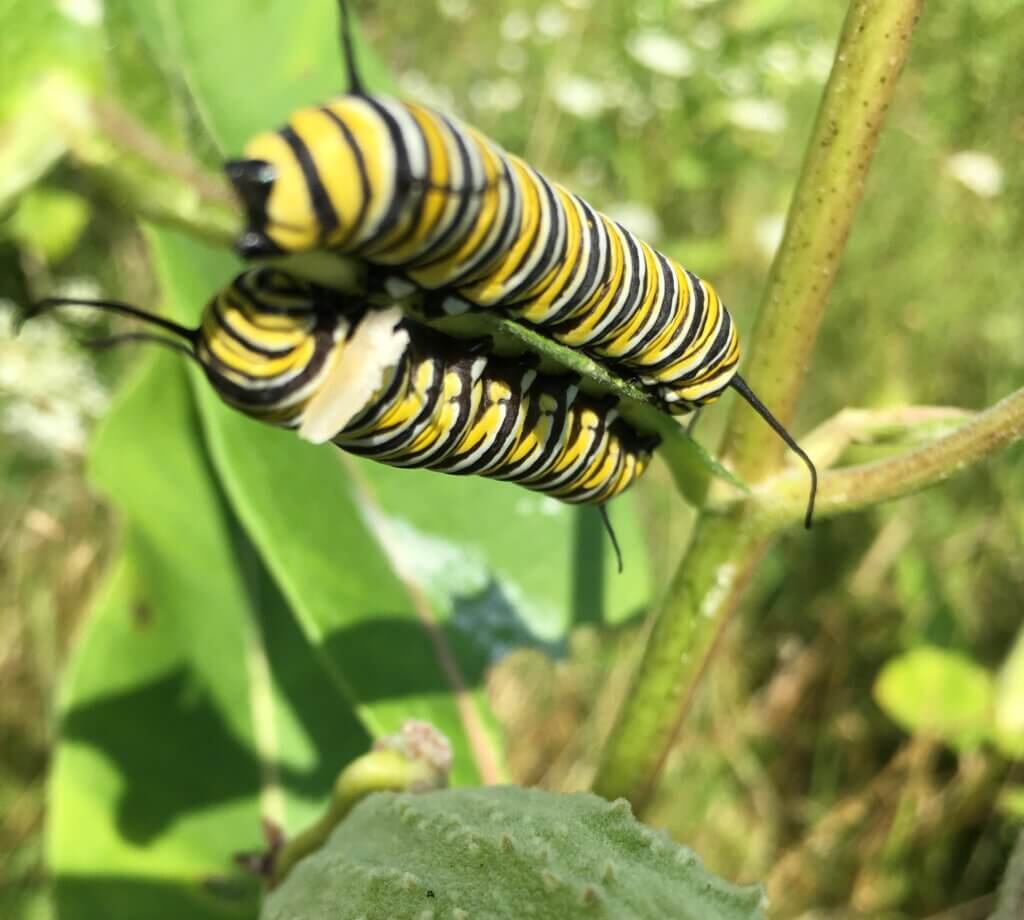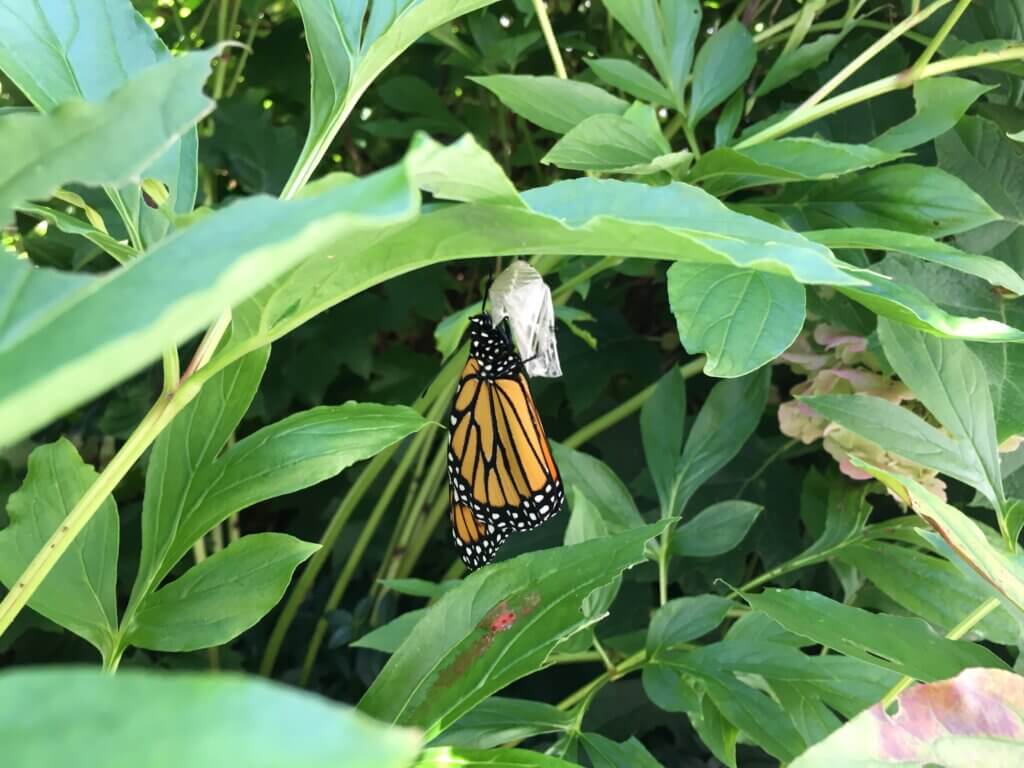
The Monarchs are Migrating North: Now What?
Monarch Butterfly Conservation Efforts You Can Take in Your Own Backyard
If you’re like me, you may have spent the past few weeks hoping to catch a glimpse of the first monarchs of the year as they journey north from Mexico into the United States and up into Canada. In addition to watching for the arrival of adults in my neighborhood, I also keep an eye on the online migration map offered by Journey North. Hit the “play” button on the map, and you’ll see an animation of the first sightings of adult monarchs during their spring 2024 migration north. It’s important to note that the map illustrates the first sightings of adults in each location. The average arrival times at each location will be later, and the map doesn’t provide any estimate of monarch numbers. But watching the animated map, I feel both anticipation and hope.
That said, hope can be difficult to maintain. We know that the area covered by overwintering monarchs in Mexico last winter was the second lowest ever recorded (0.9 hectares, second only to the 0.67 hectares recorded overwintering in 2013-2014). While some scientists continue to debate the causes and consequences of monarch overwintering declines, it’s hard to look at the graph published by Monarch Joint Venture without seeing cause for concern.

Although the data are worrying, I’m by nature an optimist, and I prefer to focus on actions that we can take to make things better. Here are four actions that many of us can take that should have a positive impact on monarch butterfly conservation.
ACTION 1
Plant native milkweed in your yard. It’s important to plant as many species of native milkweed as you can to give monarch moms a broad choice of milkweed species on which to lay their eggs (see my previous Blog post on self-medication in monarchs to learn why). It’s not too late to plant milkweed for 2024, especially if you can find milkweeds for sale at a native plant nursery.
How do you know what’s native to your area? Navigate to the USDA Plant database and search for milkweeds in your state. Once you’ve selected a state, you can then search by county. When you display the county results, it’s important to select the Native Status button on the left of the page, and hit “Apply Filter.” For example, if, like me, you live in Clarke County, Georgia, you should end up with only four milkweed species native to that county. If you have room, plant as many of those species as you can to give monarch moms the best choice possible for laying eggs. And please don’t plant non-native milkweed in your garden. You can make the situation worse for monarchs if you do.

ACTION 2
Plant additional native plant species to provide nectar for adults. Although monarch moms lay eggs only on milkweeds (because that’s all the caterpillars will eat), you can provide additional sources of nectar for adults by planting native flowering perennials in your yard. Again, it’s really important to “go native.” Native nectars contain food and medicinal compounds that match the needs of local pollinators and will help monarch adults live longer and lay more eggs.
Michaela Rogers has provided an in-depth Blog post on how to choose native plants for your pollinator garden. It’s great advice, and I encourage everyone to follow it.
ACTION 3
Support Forests for Monarchs. Tell your friends, tell your family, and post about us on social media. Forests for Monarchs provides a very direct way to improve overwintering habitat for monarch butterflies. We plant trees in Mexico that maintain the integrity of overwintering sites while providing a sustainable livelihood to local foresters and their families. Better monarch habitat, local jobs, and carbon sequestration is a rare triple win. Please help support Forests for Monarchs so that we can continue our vital work.

ACTION 4
Vote locally and nationally for candidates who have expressed a commitment to conservation and biodiversity. In my job, I’m lucky enough to encounter politicians from both ends of the political spectrum who support the conservation of biological diversity. It just makes sense. We send an important message when we support candidates for office who have a sincere interest in sustaining a healthy planet. And what’s good for the planet is good for monarch butterflies.
STAY INFORMED
To receive the most up-to-date information on monarch conservation efforts, the state of the monarch population, and what is being done to help, sign up for our e-newsletter: SIGN UP HERE. Visit our blog, The Pollinator Chronicles, for more information on the monarch butterfly.

